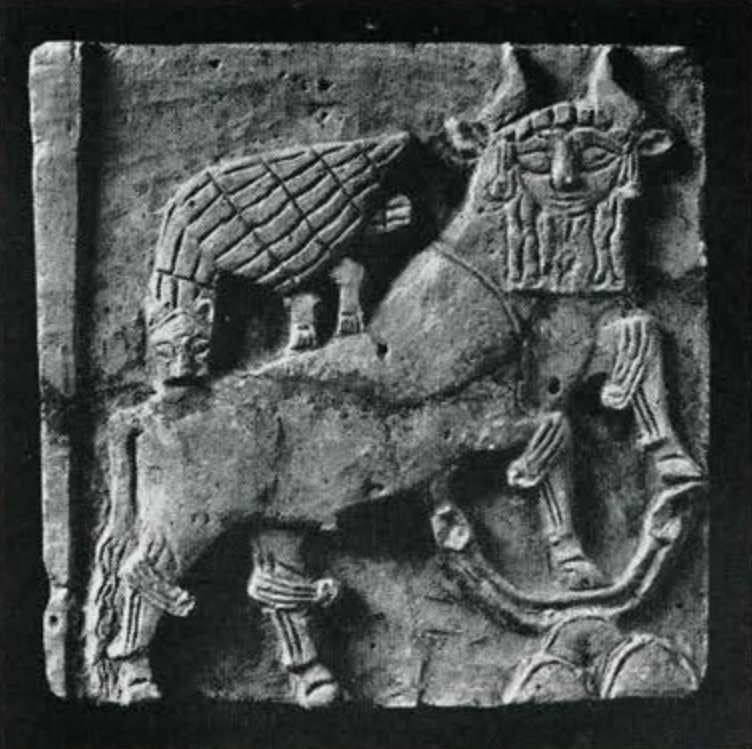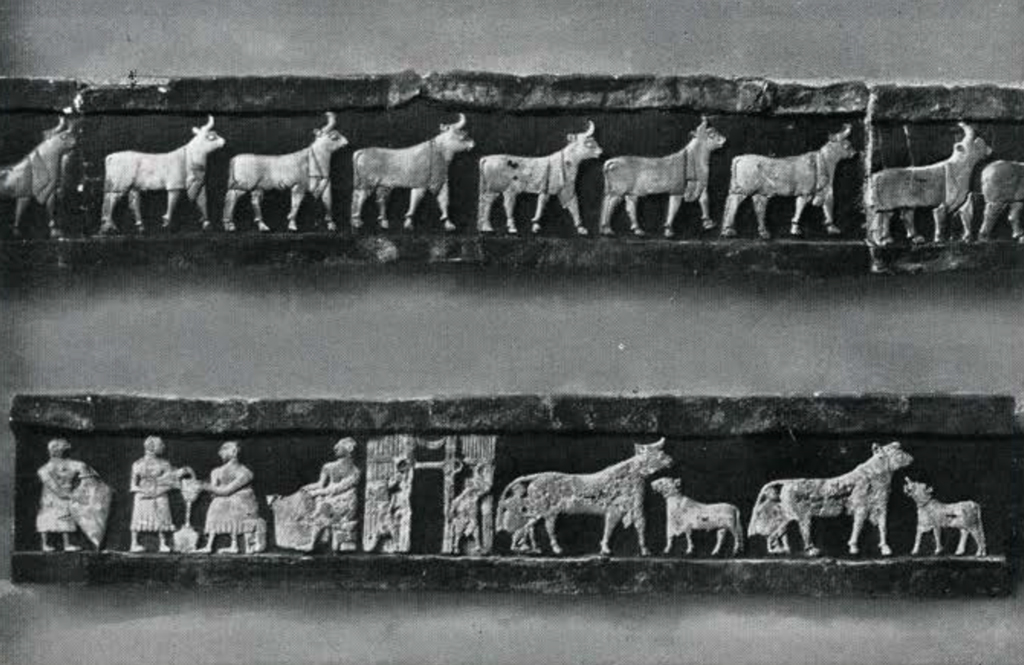Al-‘Ubaid has become a by-word of Mesopotamian archaeology. In the low mound four miles west of Ur was discovered an early Sumerian temple, and in the vicinity a much earlier cemetery. The work begun by H. R. Hall was completed by C. Leonard Woolley. The temple dedicated to the goddess Nin-Khursag was built by A-anni-padda, son of Mes-anni-padda, the first king of the First Ur Dynasty. His name was inscribed on a soapstone foundation tablet, on a gold bead and on a fragment of a votive stone bowl. These records serve to date the construction. They also establish the authenticity of the First Dynasty of Ur, included in royal lists of later age but formerly considered as fabulous. This authenticity was confirmed by the lapis lazuli seal – a gem of the Museum collections – of Nin-tur the queen, the wife of Mes-anni-padda (Ur Excavations, Vol. II, The Royal Cemetery, p. 352, no. 216) and a number of seal impressions from the royal cemetery at Ur. Thus a solid base is provided for dating the temple of al-‘Ubaid circa 2700 B.C. and consequently the early Sumerian art of the royal tombs. A coloured reconstruction of the Nin-khursag temple (Figure 19) may be seen in the al-‘Ubaid volume. Staircases led from the low ground-surrounded as we know now by a circular enclosure wall-to the upper level of the platformon which stood the shrine. Wooden columns inlaid with a mosaic of alternate coloured triangles-one in the Museum-or covered with copper plates, framed the door. In a large panel above it was seen the copper relief of Im-gig, the lion-headed eagle, arresting two antlered stags-now in the British Museum (Figure 20). Statues of bulls and lions in the round (Figure 21), partly cast, with inlaid eyes and tongues of coloured stones, formed a frieze on either side. Other figures in bas-reliefs, crouching bulls in copper, bulls (Figure. 22) and ducks passant in shell and limestone, attached to a wooden board within a copper frame on a background of bitumen, and clay flowers with coloured petals forming a line of rosettes were fixed on the walls and added to the striking effect of the decoration. The character of Nin-khursag, the mother goddess presiding over farms and cattle, whose sacred milk nourished the elect king, is well represented on the curious panel of the milking scene (Figure 23) in which little limestone figures laid in bitumen and framed in copper show the whole process of the dairy farm: calves are leaving the byre; some men are milking the cows, not from the side but from behind; the calf is tied to its mother’s neck to keep both quiet; on the other side is shown the churning, straining and storing of the butter, as still practiced to the present day.


Museum Object Number: B15606

Museum Object Number: B15886

Museum Object Number: B15880
23. Milking scene. Mosaic of cut figures on bitumen ground in copper frame from First Dynasty temple, al-‘Ubaid, circa 2700 B.C.
Image Number: 190133

